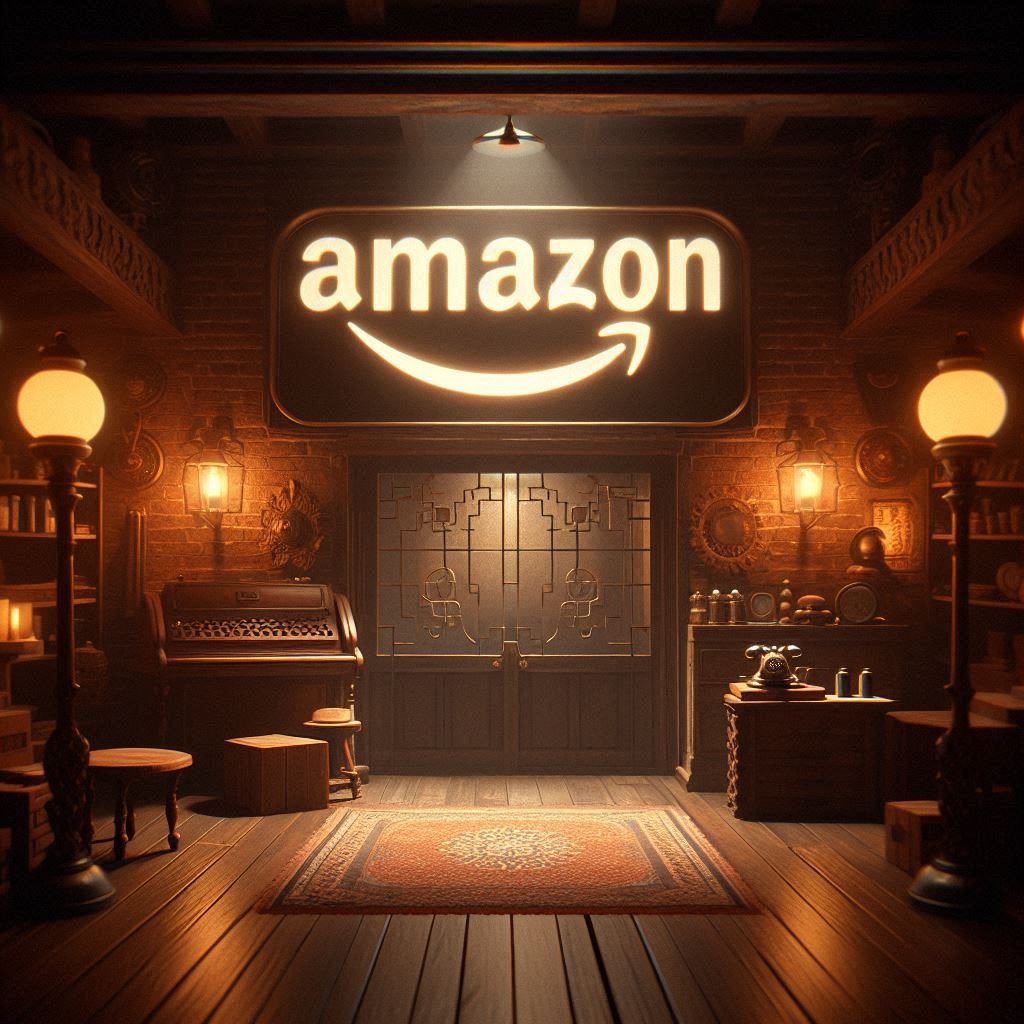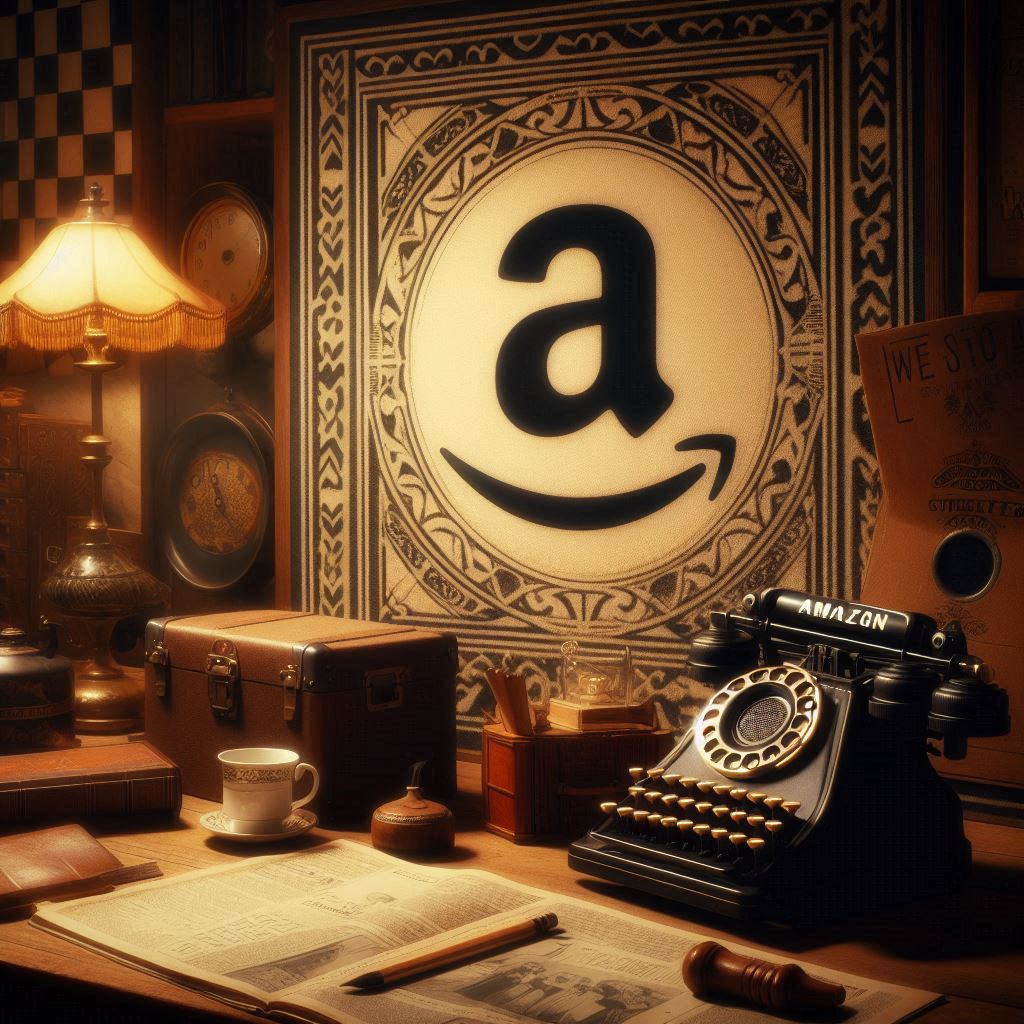SHARE THIS ARTICLE WITH YOUR FRIENDS!
Amazon and Pulp Magazines:
A HISTORICAL JOURNEY FROM 1930s PUBLISHING TO MODERN E-COMMERCE
By Davide Dana
It might sound odd at first glance—comparing Amazon, the modern-day giant of e-commerce, to the gritty, thrilling world of pulp magazines from the 1930s through the 1960s. Yet, when you peel back the layers of history, youʼll find that both represent innovative approaches to reaching and captivating audiences.
From pulp to pixels
Back in the pulp era, magazines like Weird Tales, Black Mask, and The Shadow were part of a rapidly evolving publishing landscape, embracing serialized storytelling and affordable escapist fiction. Today, Amazon champions convenience, personalization, and massive selection.
Both Amazon and pulp magazines share a spirit of innovation in packaging content for mass appeal, making them interesting subjects to compare.
Stories Printed and Pixels Delivered
Letʼs look at some specific examples from the pulp era.
Magazines such as Detective Story Magazine and Ace Detective captured the imagination of mid-20th century readers by offering serialized narratives that kept them coming back for more.
They had a knack for storytelling that left just enough suspense to hook the reader, similar to the way Amazon uses personalized recommendations that keep customers engaged.
For instance, Weird Tales was a staple in horror and fantasy genres, providing readers with a once-a-month escape into strange and eerie worlds.
In parallel, Amazon today leverages advanced algorithms to suggest new genres, authors, or even completely different products from items you often browse.
The serial delivery of content then compared with the digital, algorithm-driven product feeds now offers a glimpse of how audience engagement has evolved but still rests on the idea of recurring, quality content.
Additionally, consider the distribution strategies: Pulp magazines were widely distributed at newsstands and through subscriptions, reaching their audience wherever they might be.
Similarly, Amazonʼs distribution network spans across international warehouses and a massive online presence, ensuring products are delivered swiftly to consumers, regardless of location.
Both models, though decades apart, relied on efficient distribution methods to meet the burgeoning demand of their audiences.
Thematic Comparison: Innovation, Accessibility, and Storytelling
When you look closely, there are striking thematic similarities between the pulp magazine craze and modern e-commerce. Both industries understood the importance of accessibility. In the pulp era, affordable pricing and dynamic content ensured that even the working class could indulge in thrilling adventures and mysterious tales. Much like those days, Amazon today emphasizes affordability, variety, and speed—key components that bring in millions of customers around the globe.
Another shared theme is innovation in presentation and storytelling. Pulp magazines often featured dramatic covers and cliffhanger endings, paying attention to every detail to attract readers on store shelves. In contrast, Amazon uses high-definition product images, detailed descriptions, and customer review sections to enhance the shopping experience. The focus on engaging visuals and interactive platforms is a modern twist on the traditional allure of pulp magazine covers.
Both industries also created communities around their products. Pulp readers often eagerly awaited the next installment and discussed their favorite characters and stories in local clubs or through mail correspondence. Similarly, Amazon customers build communities through online reviews, Q&A sections, and even social media mentions.
The underlying idea is simple: people love to share what moves them, and businesses can harness that passion to build lasting connections.
Actionable Insights: Lessons from the Past for Todayʼs E-Commerce
So what can modern e-commerce entrepreneurs and marketers learn from the pulp magazine era? Here are a few actionable insights:
Embrace Storytelling: Just as pulp magazines thrived on compelling narratives, brands today should weave stories around their products. Whether itʼs through customer testimonials, behind-the-scenes content, or interactive brand narratives, storytelling helps build lasting customer relationships.
Focus on Visual Appeal: The dramatic covers of pulp magazines were designed to stand out on crowded newsstands. Modern online stores can take a page from this playbook by investing in high-quality visuals, engaging product descriptions, and dynamic web design to captivate potential buyers.
Build Communities: Establish platforms where customers can interact, share reviews, and offer recommendations. Pulp magazine enthusiasts thrived on communal discussions, and todayʼs consumers crave social proof and community engagement.
Ensure Accessibility and Convenience: Pulp magazines entered the market with affordable pricing and wide distribution. E-commerce businesses should similarly focus on reducing barriers to purchase through competitive pricing, efficient shipping, and user-friendly interfaces.
These insights underline that while the mediums have changed—from printed ink to digital pixels—the fundamentals of connecting with an audience remain constant. Whether by invoking nostalgia through retro narratives or embracing modern digital marketing, the lessons from the past are highly relevant today.
Conclusion: Reflecting on the Evolution from Pulp Magazines to Amazon Marketplace
In examining the journey from the pulp magazines of the 1930s-1960s to todayʼs expansive Amazon marketplace, we see a continuous thread of innovation in audience engagement, content delivery, and community building. The pulp era was marked by bold experiments in serialized storytelling, efficient distribution, and a keen understanding of reader psychology. Today, Amazon leverages similar principles—albeit through the advanced tools of digital technology—to satisfy modern consumer demands.
As you reflect on these parallels, ask yourself: How can modern marketing strategies learn from the tried-and-tested methods of past publishing? Maybe itʼs time to revisit those creative, vibrant stories of the pulp era and see what fresh inspiration they can bring to your own business approach. The evolution of publishing and retail is not just a testament to technological advancement, but also to the enduring power of connecting with people through compelling narratives and dependable service.
Embrace the lessons of the past to inspire the innovations of tomorrow.






